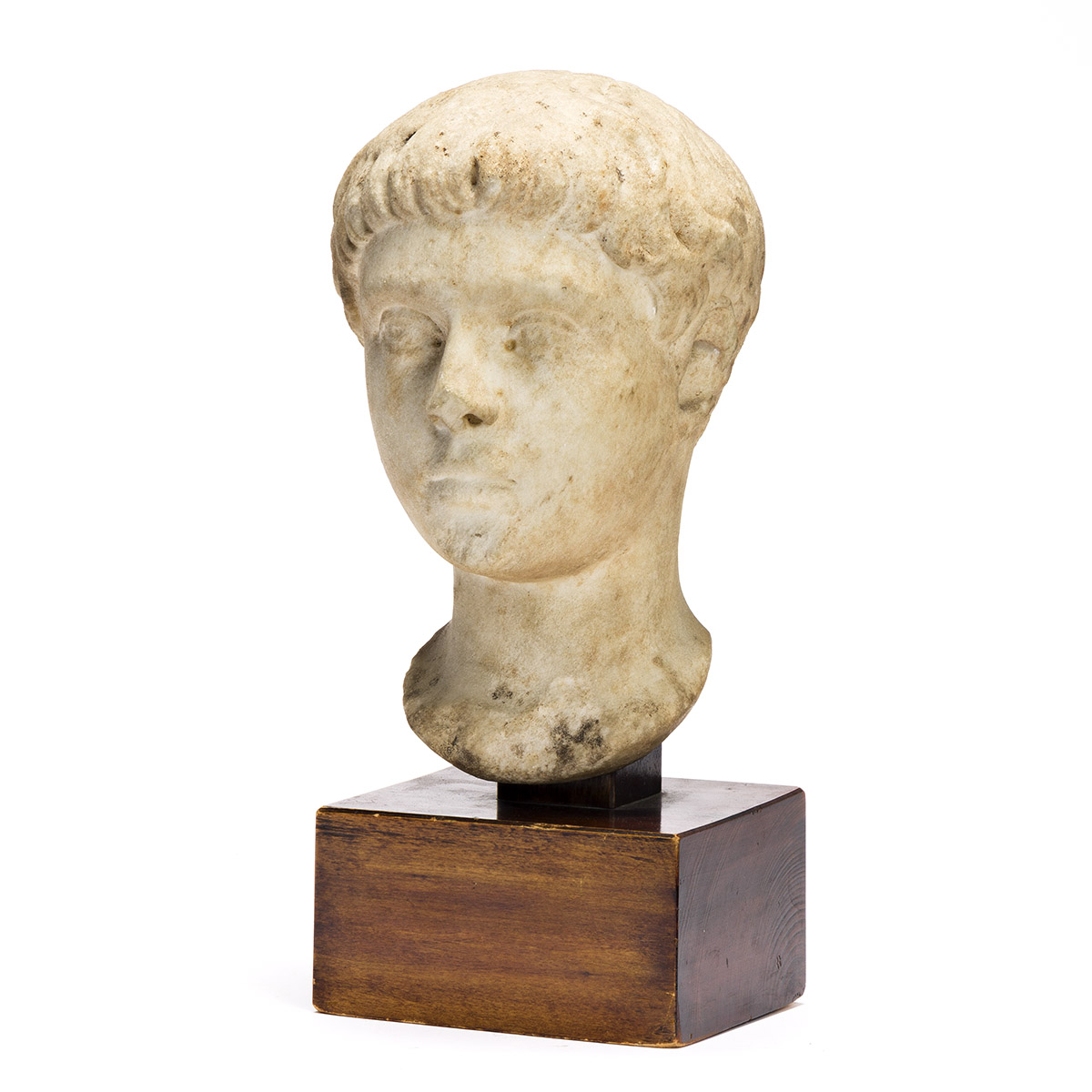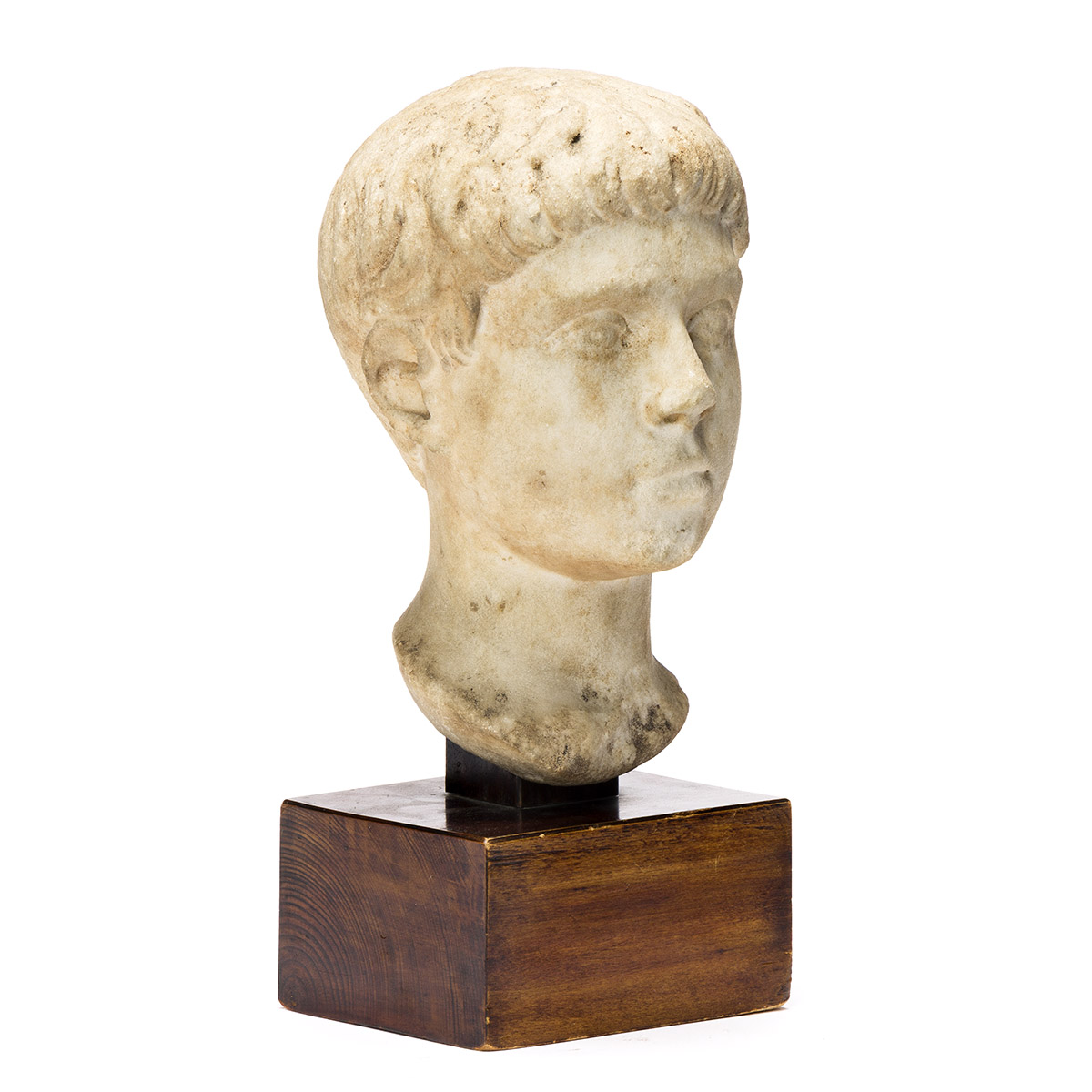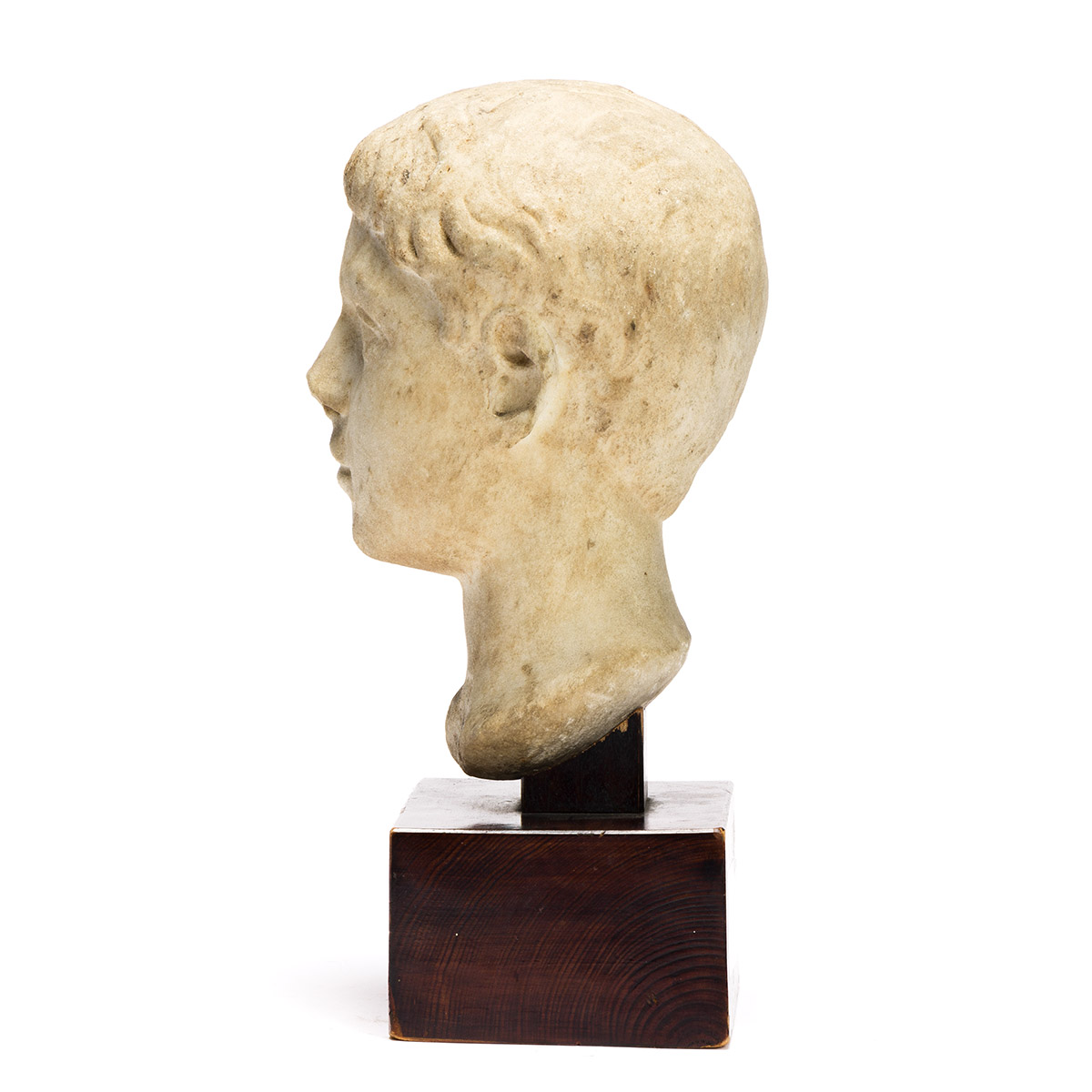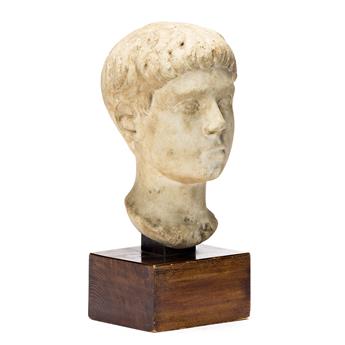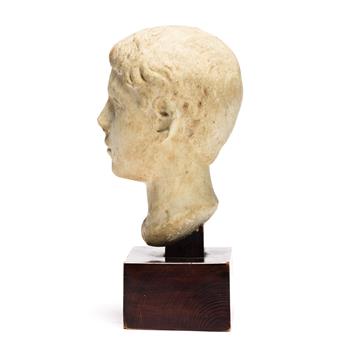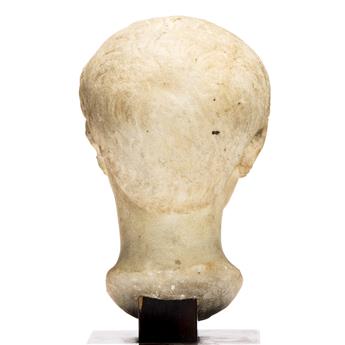Sale 2677 - Lot 97
Price Realized: $ 55,000
Price Realized: $ 68,750
?Final Price Realized includes Buyer’s Premium added to Hammer Price
Estimate: $ 50,000 - $ 75,000
ROMAN BUST OF A YOUTH
Head of A Boy.
Carved marble on a wooden base. 266x177x165 mm; 10½x7x6½inches (overall). Circa 2nd Century AD.
Provenance: acquired by Wilhelm von Gloeden between 1897 - 1914; thence by descent to Pancrazio Buciunì; acquired by Tennessee Williams (1948); gifted to Gore Vidal (June 1950); acquired from Abell Auction, California, on October 15, 2017.
This prime example of Roman sculpture was originally owned by the German photographer Wilhelm von Gloden, who acquired it while living in Sicily between 1894 and 1914. After von Gloden passed away in 1931, the bust entered the collection of his muse and heir, Pancrazio Buciunì. As fascism rose and Mussolini came to power, the Vatican allied with the government, and a significant portion of von Gloeden's inheritance was confiscated and destroyed by police as obscene. An Italian dealer brokered the bust sale from Buciunì to American playwright and screenwriter Tennessee Williams in 1948. Tennessee Williams and partner Frank Merlo gifted the sculpture to Gore Vidal as a housewarming gift in July 1950 when he acquired "Edgewater," a sprawling estate in Dutchess County, New York—previously owned by John Jay Chapman, who, with his second wife, Elizabeth Astor Chanler, purchased Edgewater in 1902. Vidal and his partner Howard Austen made Edgewater their home for nineteen years. Vidal and Austen lived with the bust, which they affectionately dubbed Alessio, for another thirty-four years, travelling with it as they divided their time between La Rondinaia, Ravello, Italy, and the Hollywood Hills. The provenance was confirmed by Victor Cambell, Tennesse Williams' final partner.
Illustrated: "The Best Man Gore Vidal At Political Rally & At Home," Life Magazine, April 25, 1960; "Special Italian Edition Gore Vidal on High," Architectural Digest, January 1994, pg: 96; Catherine Fairweather, La Dolce Vida, Pavillion Books Limited, 2001, pg: 59; "First Draft of Gore Vidal's Illustrated Memoir," Gawker Magazine, November 12, 2008, "www.gawker.com/5084411/a-first-draft-of-gore-vidals-illustrated-memoir."
This impressive 3/4 bust of an ephebe is a prime example of a 2nd Century ADarte aulica or patrician tradition (art of the nobles). The articulation of the face captures the realistic features of a work that would have been owned by a Roman noble. His lidded almond-shaped eyes under arching brows, small mouth with lips tightly formed, and wavy locks combed forward along his forehead potentially denote that he was bound for mandated military service.
Exhibition Hours
Exhibition Hours
Aliquam vulputate ornare congue. Vestibulum maximus, libero in placerat faucibus, risus nisl molestie massa, ut maximus metus lectus vel lorem.



